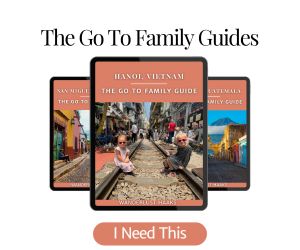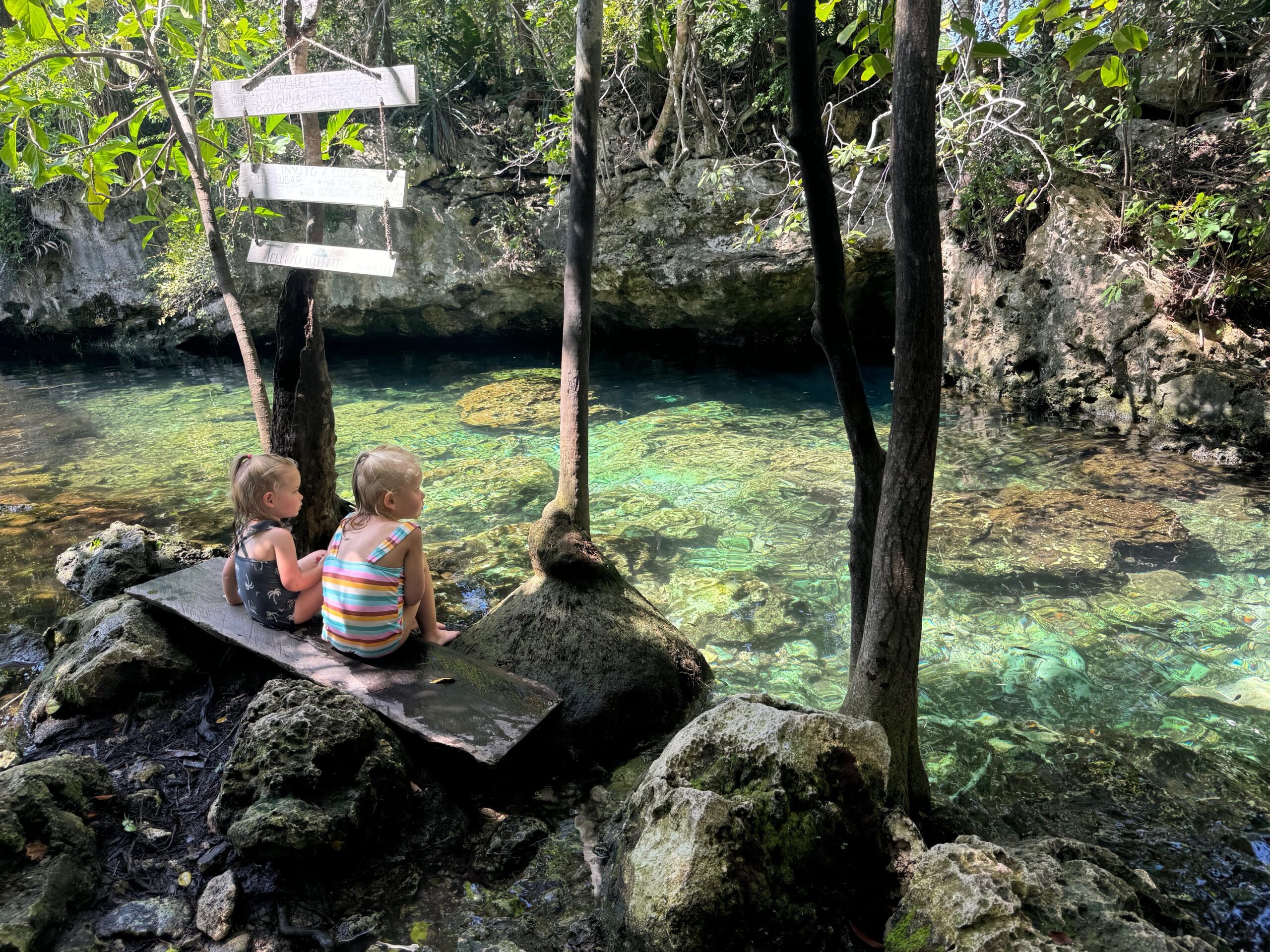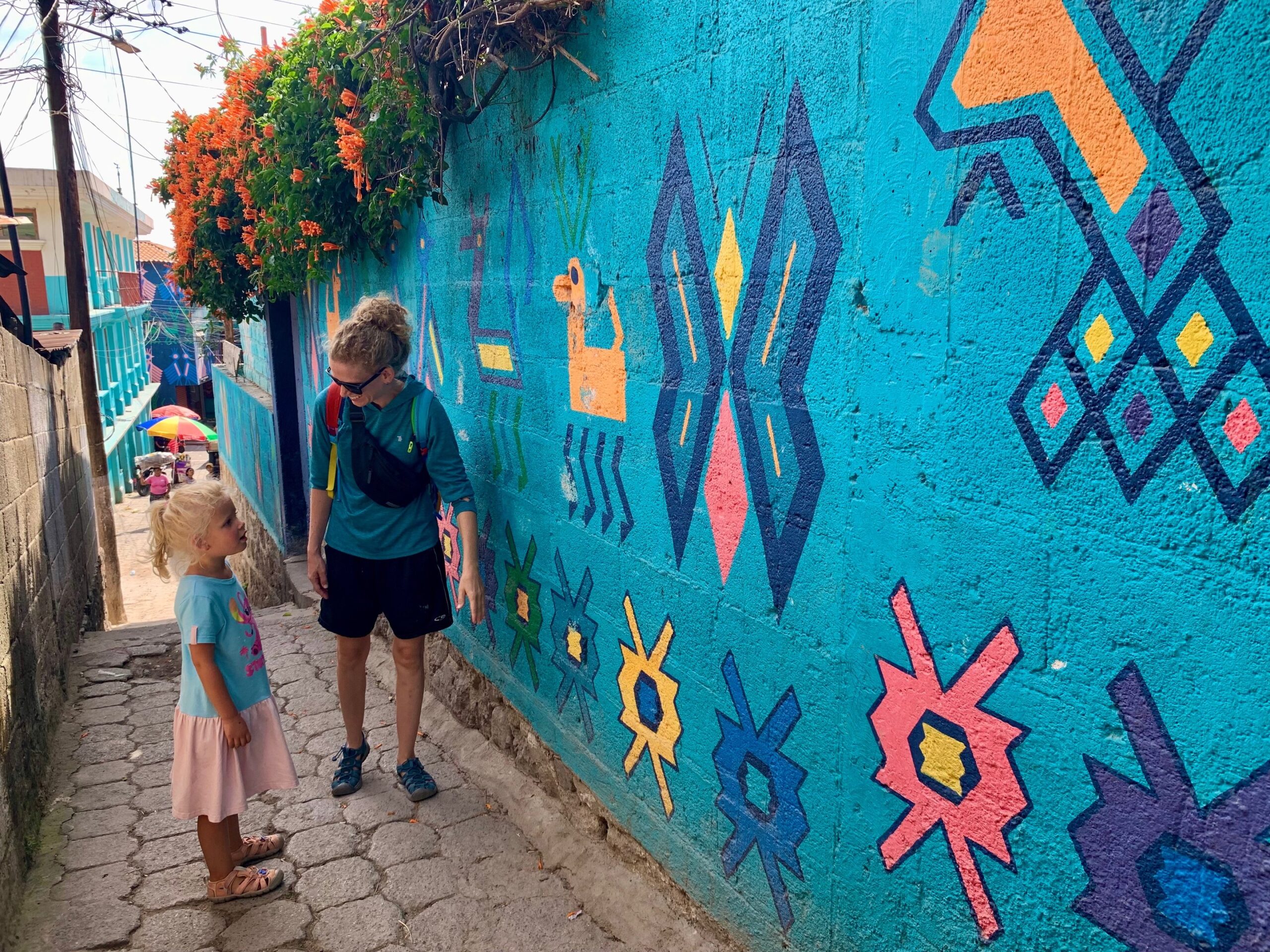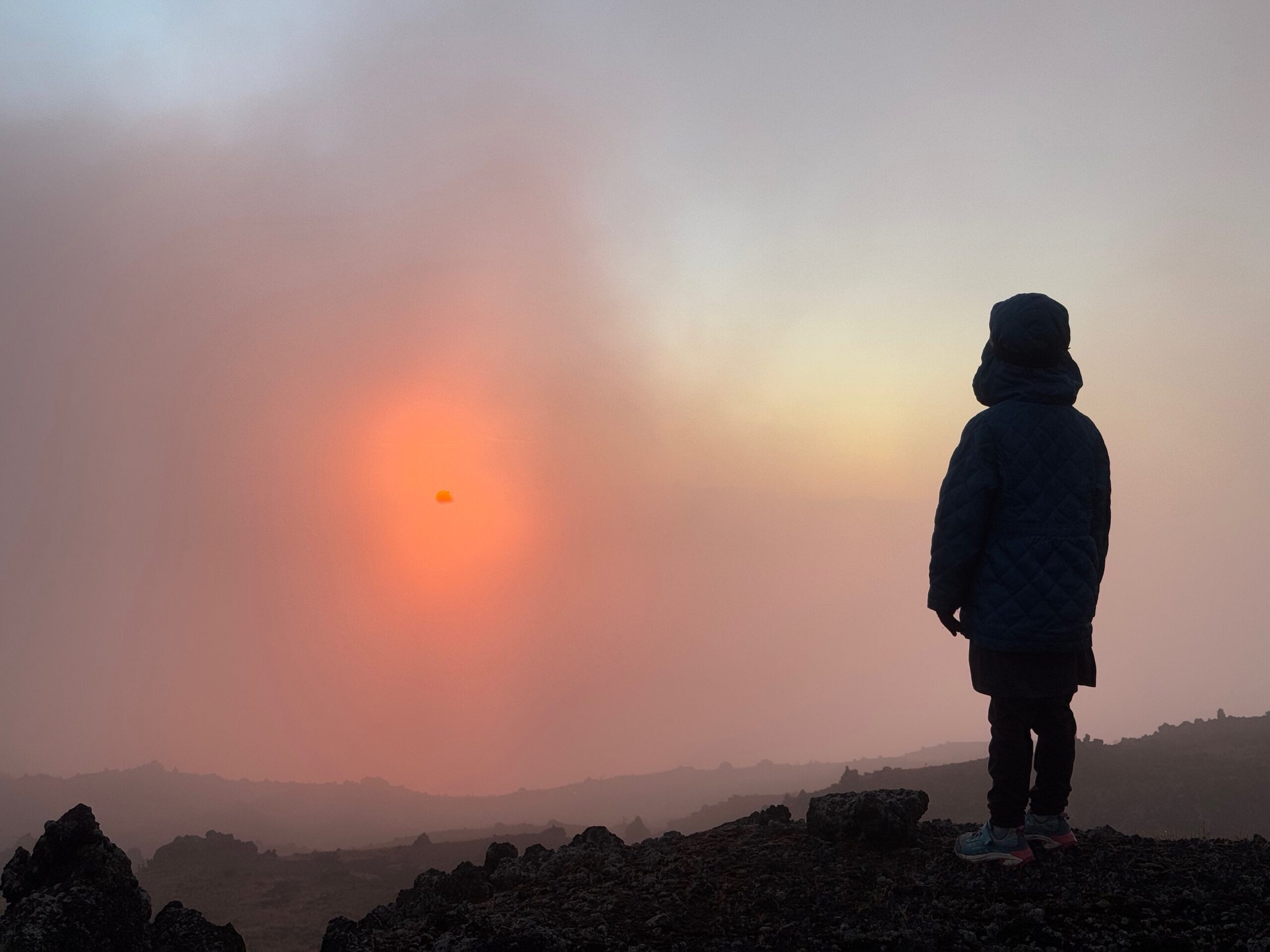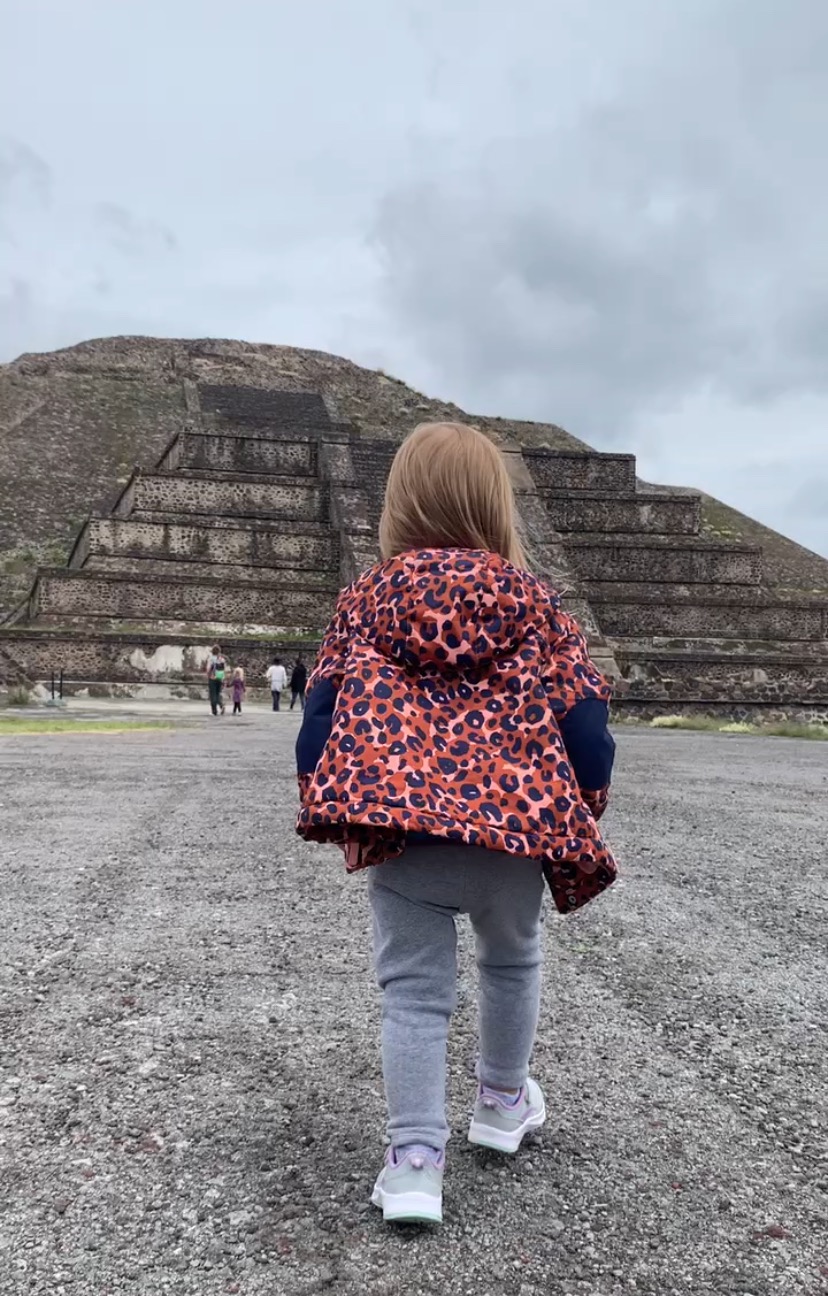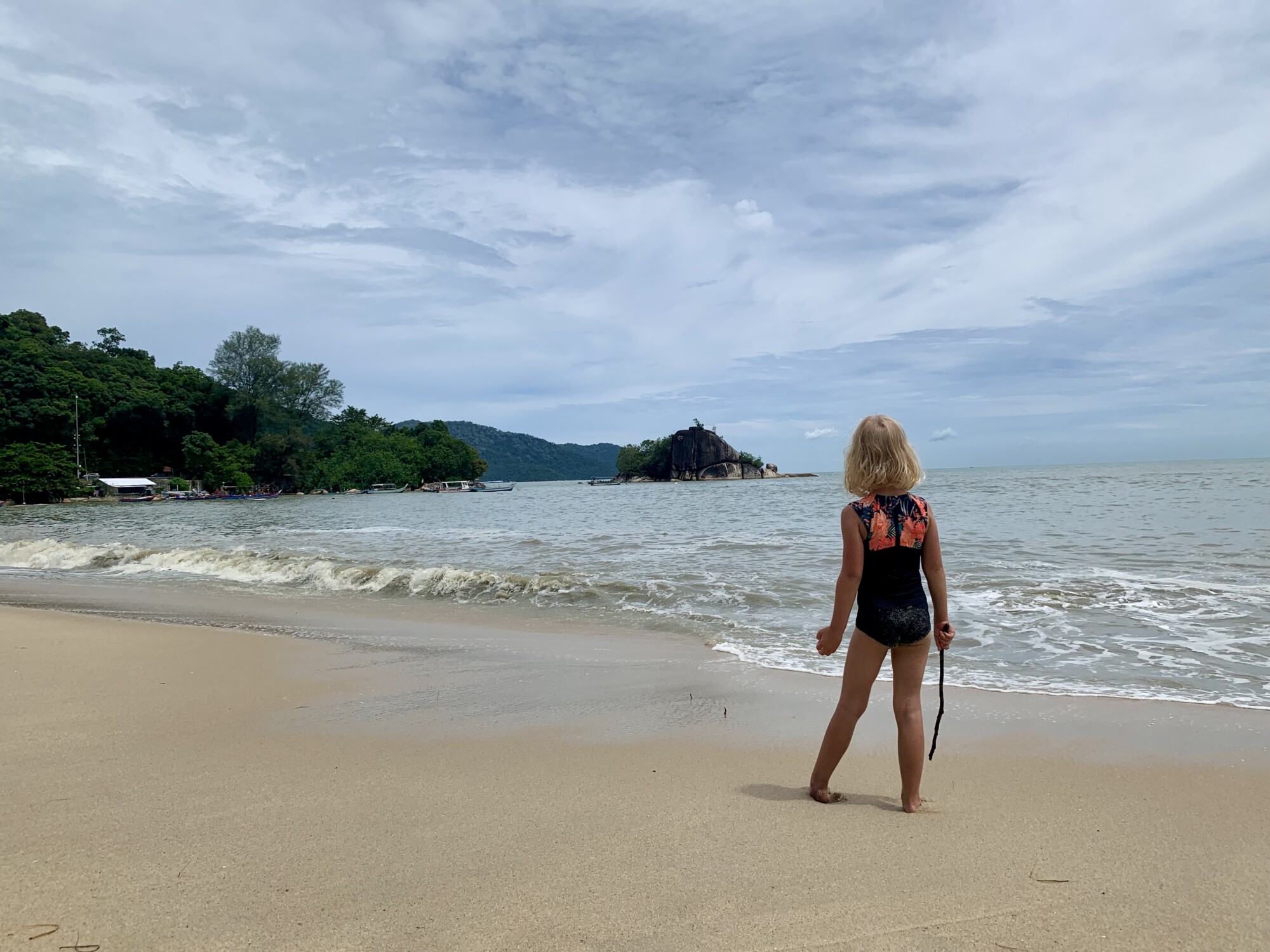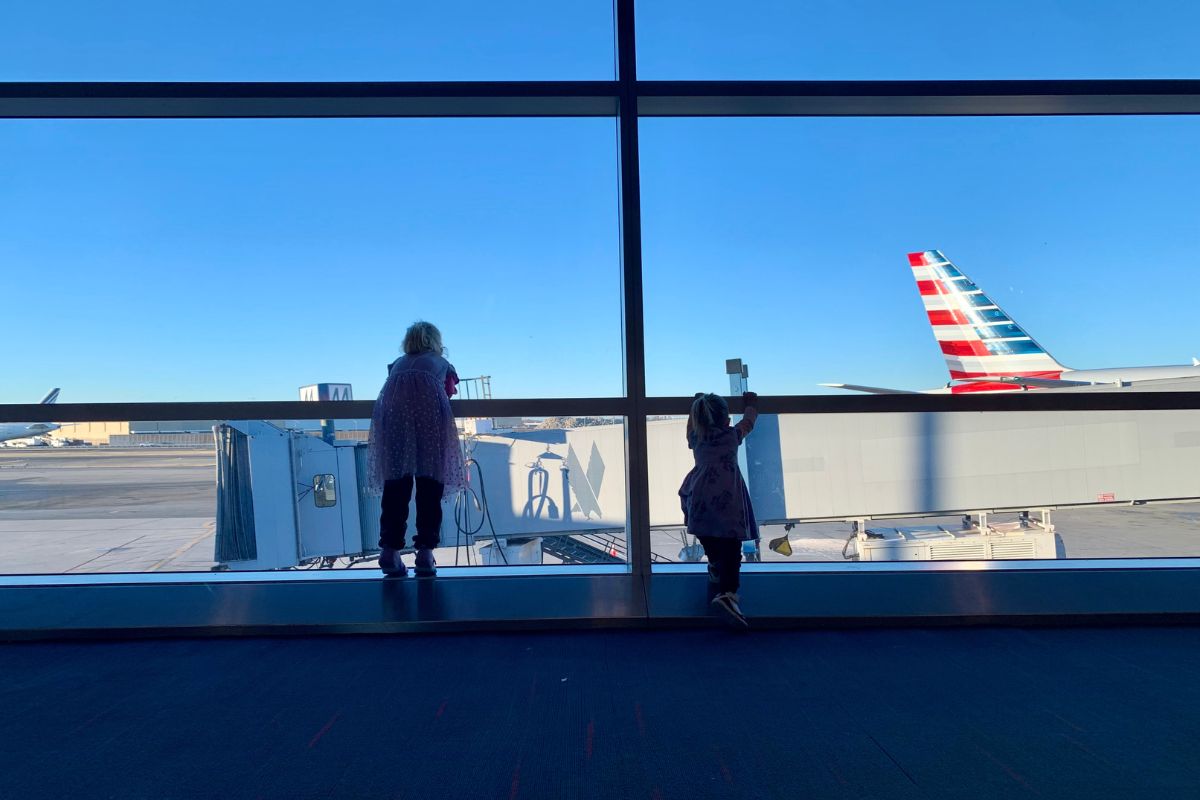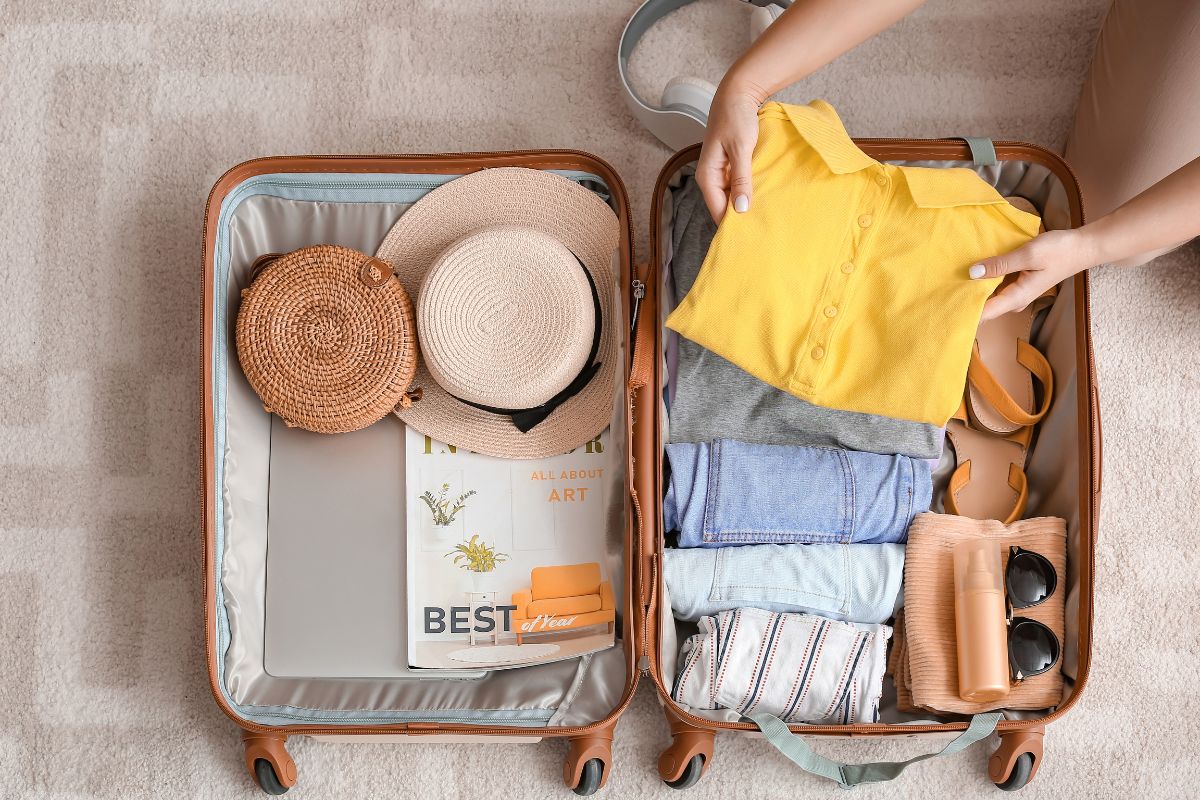Taking a family gap year might sound like a wild dream—a year off from the hustle and bustle of life to spend intentional time together. But trust me, it’s one of the best decisions we’ve ever made. For our family, it wasn’t just about hitting pause on life; it was about reclaiming time, prioritizing relationships, and creating experiences that we’ll cherish forever. It gave us a chance to reevaluate our priorities, strengthen our bonds, and gain new perspectives on life and the world around us.
In this post, I’ll share how our family gap year transformed our relationships and outlook on life, the challenges we faced, and how you can plan your own. Whether you’re dreaming of taking the leap or just curious about what it’s like, this post will give you all the details you need.
What Is a Family Gap Year?
A family gap year is exactly what it sounds like—a year (or any extended period) where a family takes a break from their normal routines, such as work, school, and extracurricular activities, to focus on spending intentional time together. It’s a chance to step away from the daily grind and prioritize what truly matters: connection, growth, and exploration. For many families, a gap year involves traveling to different destinations, but it can also be about staying in one place, simplifying life, and living more mindfully.
The beauty of a family gap year is that it can look completely different depending on what your family values. It might mean exploring new countries, embarking on adventures in your own backyard, or simply spending time together in a way that feels meaningful to you.
Why We Chose a Family Gap Year
For us, the idea of a family gap year was born out of a desire to buy time over things. My husband and I had spent years dreaming about the possibility of taking time off to reconnect as a family. Like many parents, we were feeling the weight of constant obligations—work deadlines, school commitments, and the never-ending cycle of busy schedules. We were exhausted, burnt out, and longing for something different.
Initially, we thought we’d wait until our kids were older—maybe when they were seven and ten. But as the years went by, we realized there was no perfect time to hit pause on life. Waiting only meant risking that the dream would remain just that—a dream. So, we decided to make it happen sooner rather than later.
What a Family Gap Year Looks Like
Traveling the World
For many families, a gap year means traveling to different destinations and experiencing new cultures together. This might include:
-
Exploring famous landmarks
-
Immersing yourselves in new languages
-
Trying local cuisines
-
Learning about the history and traditions of different communities
For others, it’s about taking time to travel slowly, spending weeks or even months in one location to truly immerse themselves in the culture.
Intentional Living
A family gap year doesn’t have to involve globe-trotting. For some families, it’s about staying in one place and simplifying life. This could mean:
-
Downsizing to a smaller home or RV
-
Spending more time outdoors
-
Taking on creative projects together
-
Prioritizing hobbies and activities that bring joy and connection
Ultimately, a family gap year is about living intentionally—whether that means seeing the world or creating a slower pace of life at home.
Relaxing after swimming in a cenote
Strengthening Family Bonds Through Intentional Time
How It Changed Us
1. Flexibility Over Rigidity
During our gap year, we ditched the rigid schedules and endless obligations of our former lives. Instead, we embraced flexibility, which allowed us to:
-
Wake up when it suited our kids’ natural rhythms, rather than being jolted awake by alarms.
-
Enjoy slow, leisurely breakfasts together without worrying about being late.
-
Dive into activities we all loved, from exploring local parks to trying new foods at farmers’ markets.
This flexibility gave us the freedom to follow our kids’ energy levels and moods, making every day feel more enjoyable and less forced. It also meant that we were more present in the moment, savoring our time together instead of watching the clock.
2. A More Relaxed Environment
The constant pressure of deadlines, work calls, and running errands can take a toll on a family. During our gap year, all of that melted away. Without these stressors, we noticed incredible changes in our kids:
-
They were less anxious and irritable, which made our interactions much more positive.
-
They felt more secure knowing we weren’t leaving for work at a moment’s notice.
-
They had the space to simply be themselves, without the external pressures that often come with our fast-paced daily lives.
This shift in environment helped us foster a deeper sense of trust and understanding. When kids feel safe and unhurried, they naturally open up more, and that’s exactly what we experienced.
3. Shared Experiences Create Lasting Memories
The slower pace of our gap year allowed us to share experiences that became some of our most cherished memories. These weren’t grand, expensive outings, but simple, meaningful moments:
-
Playing Ball in a Central Square: Something as simple as throwing a ball back and forth turned into an hour of laughter, connection, and pure joy.
-
Hiking Local Trails: Walking side by side through nature allowed us to have real conversations while enjoying the beauty around us.
-
Exploring Neighborhoods: Whether it was wandering through a colorful market or trying new foods at a street stall, these little adventures created big memories.
These shared experiences weren’t just about spending time together—they were about creating moments that we could all look back on and smile.
Santa Catarina in Lake Atitlán
Overcoming Challenges: How Struggles Build Resilience
Taking a family gap year isn’t all about idyllic destinations and quality family time. While the rewards are incredible, the journey comes with its fair share of challenges. Not everything was sunshine and rainbows for us. Some of the struggles we faced were tough, but they also turned out to be valuable opportunities for growth and resilience.
Financial Hurdles: Finding a Long-Term Solution
When we first began planning our family gap year, our initial strategy was to rent out our home on Airbnb to help fund part of the trip. It seemed like a practical solution, but things didn’t go as planned. We ran into challenges with local regulations, fluctuating demand, and the logistics of managing the property from afar. That’s when we realized we needed to think beyond short-term fixes.
What We Did Instead:
-
Downsizing and Then Selling Our Home: We made the difficult decision to sell our house and downsize to a more minimal lifestyle. This move not only gave us the financial freedom to embark on our gap year but also aligned with our goal of living more intentionally.
-
Budgeting for Sustainability: We tracked our spending meticulously, researched the cost of living in each destination, and prioritized value over luxury. By sticking to a clear budget, we ensured our finances could sustain us for the entire trip—and beyond.
Lessons We Learned During Our Family Gap Year
1. Time Together Shapes Who They Become
Watching our kids explore the world firsthand reminded us that education isn’t confined to a classroom. It’s in the experiences, the connections, and the moments of curiosity that naturally arise when you step outside your comfort zone.
2. Children Belong in the World
One of the most surprising lessons we learned during our gap year was how differently cultures treat children. In many of the places we visited, children were not only accepted in public spaces but celebrated. This was a stark contrast to the “kids-should-be-seen-not-heard” attitude we often encounter back home in the U.S.
What We Experienced:
-
Warm Welcomes: In restaurants, markets, and community events, locals didn’t just tolerate our kids—they engaged with them. Waitstaff offered crayons and kid-friendly meals without hesitation. Market vendors shared stories and asked our kids questions. Strangers smiled and waved, making our children feel seen and valued.
-
Family-Centered Cultures: Many of the cultures we experienced had a strong focus on family. It wasn’t uncommon to see children running around freely at community gatherings or staying up late with their families during celebrations. It was clear that kids were considered an integral part of the social fabric, not a disruption.
Volcano Pacaya
Choosing Alternative Education Paths
One of the most exciting aspects of our family gap year has been the opportunity to reimagine education for our children. While our kids aren’t school-aged yet, we’ve already decided to embrace a more untraditional approach to learning. Instead of following a rigid, one-size-fits-all system, we’ve opted for a blend of homeschooling and worldschooling—two approaches that allow us to create a customized, hands-on learning environment wherever we go.
1. Real-World Learning
We believe some of the most meaningful lessons come from experiences, not textbooks. During our gap year, we’ve had countless opportunities to bring education to life.
-
Learning About Volcanoes: Instead of reading about volcanoes in a book, our daughter hiked one. She touched the rocks and asked questions about how they formed. This immersive experience made geology exciting and memorable.
-
Picking Up Spanish Naturally: After spending three months in Spanish-speaking countries, our daughter started picking up the language organically. By interacting with locals, hearing the language daily, and practicing phrases in real-life situations, she developed a foundation in Spanish far beyond what she could have learned in a traditional classroom.
2. Prioritizing Traditional Skills
While worldschooling is at the core of our educational approach, we also prioritize traditional academic skills like math, reading, and writing. We’ve found that balancing structure with flexibility works best for our family.
-
Short, Focused Lessons: We dedicate 30–60 minutes a day to traditional subjects. These short, focused sessions ensure that our kids build a strong foundation in core areas without feeling overwhelmed.
-
Using Resources: We use online programs, workbooks, and printable activities to supplement their learning. Apps like Khan Academy Kids and Reading Eggs have been particularly helpful for math and reading.
-
Making It Relevant: Whenever possible, we tie traditional skills to real-life situations. For example, practicing addition and subtraction while calculating expenses at a local market makes math more engaging and practical.
3. Encouraging Child-Led Exploration
One of the biggest advantages of homeschooling and worldschooling is the freedom to follow our kids’ interests. Instead of sticking to a predetermined curriculum, we let our children guide their learning based on what excites them.
-
Nature Exploration: If our kids are fascinated by animals or plants, we dive into biology. This might mean visiting a rainforest, going on a safari, or simply spending time observing insects in a local park.
-
History in Context: When our kids show an interest in ancient civilizations, we explore ruins, museums, or historical landmarks. Seeing these places in person makes history feel real and tangible.
-
Creative Expression: From drawing landscapes to storytelling, we encourage creativity in all its forms. This helps our kids process what they’re learning and express their unique perspectives.
Botanical Gardens In San Miguel de Allende
Practical Tips for Planning Your Own Family Gap Year
Here’s how we planned our family gap year, from managing finances to gathering resources, along with practical tips to help you map out your own journey.
1. Start Early: The Key to Successful Planning
Planning a family gap year requires time. We started preparing 11 months in advance, which gave us the opportunity to save money, adjust our lifestyles, and sort out logistics.
Why Start Early?
-
Financial Preparation: Saving for a gap year takes time, and the sooner you start, the more flexibility you’ll have. My favorite financial books are at the bottom of the blog!
-
Work and School Adjustments: If you or your partner work, you’ll need time to negotiate time off or resign. If your kids are in school, you’ll want to research educational options like homeschooling or worldschooling.
-
Family and Home Planning: Deciding what to do with your home—whether to rent it out, sell it, or leave it unoccupied—requires careful thought and planning.
2. Assess Your Finances
Taking a gap year isn’t free, but it’s also not as expensive as many people think. The first step is to take a hard look at your finances.
Budgeting Tools and Tips
-
Track Your Spending: Use apps like Empower to track your expenses for a few months. This will give you a clear picture of where your money is going and areas where you can cut back.
-
Set a Target: Determine how much money you’ll need for your gap year. This will depend on factors like your destinations, travel style, and the size of your family.
-
Save Strategically: For us, prioritizing travel over material possessions helped us save $100,000 in 11 months.
3. Create a Realistic Budget for Your Gap Year
Once you’ve assessed your finances, create a budget for your family gap year. This should include all potential expenses, such as:
-
Transportation: Flights, car rentals, buses, trains, and fuel.
-
Accommodations: Airbnb, hostels, hotels, or long-term rentals.
-
Food: Eating out, groceries, and snacks.
-
Activities: Tours, museum admissions, classes, and adventures.
-
Insurance: Travel insurance and health insurance coverage.
-
Miscellaneous: SIM cards, laundry, tips, and souvenirs.
4. Decide What to Do With Your Home
If you own a home, you’ll need to decide what to do with it during your gap year. Here are some options:
-
Rent It Out: Renting your home on platforms like Airbnb or Furnished Finder can provide extra income during your travels.
-
Sell It: If you’re ready to downsize or make a long-term lifestyle change, selling your home can free up funds for your gap year.
-
Leave It Empty: If renting or selling isn’t an option, consider asking a trusted friend or family member to check on the property regularly.
We initially planned to rent our home on Airbnb but ultimately decided to sell it. This allowed us to simplify our lifestyle and focus fully on our travels.
Stay Organized With Planning Tools
Planning a family gap year is no small feat. Between managing budgets, itineraries, bookings, and daily schedules, it’s easy to feel overwhelmed. Staying organized is crucial to ensuring your gap year goes as smoothly as possible.
Google Sheets or Excel: Your Budget and Planning Hub
Google Sheets or Excel is one of the most versatile tools you can use to organize your gap year. Here’s how we used it to streamline our planning:
How to Use It:
-
Budget Tracker: Create a spreadsheet to track your expenses before and during the trip. Divide it into categories like flights, accommodations, food, transportation, and activities. Include columns for your budgeted amount, actual spending, and the difference.
-
Itineraries: Build an itinerary sheet that includes dates, destinations, accommodations, transportation details, and activities. Share it with your family or travel partners for easy collaboration.
-
Packing Lists: Create checklists for each family member, ensuring you don’t forget essentials like passports, travel insurance, or kids’ favorite toys.
-
Savings Goals: Use a spreadsheet to set and track your savings goals. Include monthly targets and track your progress to stay motivated.
Why It Works:
-
Customizable: You can tailor spreadsheets to meet your family’s unique needs.
-
Collaborative: Google Sheets allows multiple users to edit the document in real-time, which is great for shared planning.
-
Accessible Anywhere: Access your sheets from any device with internet access, ensuring you always have your plans on hand.
Why Travel Insurance Is Essential for a Family Gap Year
A family gap year involves long-term travel, multiple destinations, and plenty of variables—all of which increase the likelihood of unexpected events. Travel insurance acts as a safety net, covering costs that could otherwise derail your plans or put a strain on your finances.
Top Travel Insurance Providers for Family Gap Years
Here are three reputable travel insurance providers that cater to long-term family travel:
1. World Nomads
World Nomads is a popular choice for families and long-term travelers due to its comprehensive coverage and flexibility.
-
Pros: Covers over 200 adventure activities, offers add-ons for high-risk destinations, and allows you to extend coverage while traveling.
-
Cons: Slightly higher premiums compared to other providers.
-
Best For: Families planning adventure-heavy itineraries.
2. SafetyWing
SafetyWing specializes in affordable, long-term travel insurance for digital nomads and families.
-
Pros: Includes medical coverage and travel-related incidents, such as trip interruptions and lost luggage. It’s also one of the few plans that allows you to add children under 10 at no extra cost.
-
Cons: Limited coverage for high-risk activities.
-
Best For: Families looking for budget-friendly, flexible coverage.
3. InsureMyTrip
InsureMyTrip is an aggregator site that allows you to compare plans from multiple providers.
-
Pros: Wide variety of plans to choose from, customizable coverage, and excellent customer service.
-
Cons: Time-consuming to compare multiple options.
-
Best For: Families who want to compare policies side by side to find the best fit.
Teotihuacan
Staying Connected With Loved Ones During a Family Gap Year
One of the most challenging aspects of embarking on a family gap year is staying connected with loved ones back home. Whether it’s grandparents who miss seeing their grandkids or close friends you rely on for support, the distance can feel overwhelming at first. Thankfully, technology has made staying in touch easier than ever. Video chats, calls, and instant messaging helped bridge the gap for us and kept our relationships strong, even while we were thousands of miles away.
Tools and Technology to Stay Connected
We relied heavily on technology to stay in touch with family and friends. Here are the tools that made it all possible:
1. Video Chat Apps
Seeing familiar faces on a screen is the next best thing to being there in person. These apps were our go-to for video calls:
-
Zoom: Great for group calls with multiple family members. Zoom offers free 40-minute calls or longer ones with a paid subscription.
-
FaceTime: Perfect for one-on-one calls if your family uses Apple devices.
-
WhatsApp Video Calls: A convenient option for international video chats with minimal data usage.
2. Messaging Apps
Instant messaging apps made it easy to stay in touch throughout the day, whether it was a quick “Good morning!” or a photo of the kids’ latest adventure.
-
WhatsApp: Great for group chats and sharing photos and videos in real time.
-
iMessage: Perfect for Apple users, with seamless integration across devices.
Overcoming Challenges of Staying Connected
While technology makes it easier to stay in touch, it’s not without its challenges. Here’s how we overcame common obstacles:
1. Time Zone Differences
Coordinating calls across time zones can be tricky, especially when your schedules don’t align.
-
Solution: Use tools like World Time Buddy to find overlapping times that work for everyone.
-
Tip: Schedule calls during your downtime, such as early mornings or evenings.
Is a Family Gap Year Right for You?
Taking a family gap year is a big decision—one that requires thought, preparation, and a willingness to embrace the unknown. While it isn’t the right fit for every family, it can be a life-changing experience for those who crave more time together, deeper connections, and a break from the relentless pace of modern life.
If you’ve ever dreamed of hitting the pause button on your routine to focus on what truly matters, a family gap year might be exactly what you need. Here’s how to determine if it’s right for your family and some tips for making it work.
Who Should Consider a Family Gap Year?
A family gap year might be a good fit if:
-
You Feel Stuck in the Daily Grind: If your days are filled with work, school, and endless to-do lists, and you long for a slower pace, a gap year can provide the reset you need.
-
You Want to Spend More Time Together: A gap year allows you to prioritize quality time with your loved ones, free from the distractions of everyday life.
-
You Value Experiences Over Things: If you’d rather invest in memories than material possessions, a family gap year aligns perfectly with this mindset.
-
You’re Ready for a New Adventure: If you’re open to stepping outside your comfort zone and embracing change, a gap year offers endless opportunities for growth.
Who Might Struggle With a Family Gap Year?
A family gap year isn’t for everyone. It might not be the best fit if:
-
You’re Uncomfortable With Uncertainty: Traveling for an extended period requires flexibility and adaptability. If change makes you uneasy, a gap year might feel overwhelming.
-
Finances Are Tight: While a gap year doesn’t have to be expensive, it does require financial planning. If you’re already struggling to make ends meet, it may not be the right time.
-
Your Kids Are Resistant: If your children are older and deeply involved in school or extracurriculars, they may struggle with the idea of leaving their routines and friends behind.
If any of these challenges resonate, consider starting small. A few months of slow travel or a long summer break might give you a taste of the gap year experience without the full commitment.
How to Decide if a Family Gap Year Is Right for You
1. Ask Yourself These Questions:
-
What are our reasons for wanting a family gap year? Is it about more time together, experiencing new cultures, or breaking free from routine?
-
What challenges might we face, and how can we address them?
-
Can we financially sustain a gap year? What adjustments would we need to make?
-
How would this impact our kids’ education, and what alternatives are we comfortable with?
-
Are we willing to make sacrifices, like downsizing or giving up certain luxuries, to make this happen?
2. Start Small
If you’re unsure whether a full year is feasible, try a smaller commitment first:
-
Extended Summer Travel: Plan a two- or three-month trip during school breaks.
-
Short-Term Sabbatical: Take a few months off work and travel as a family.
-
Staycation with Purpose: Take time off to live intentionally at home, focusing on family time and new experiences in your local area.
Starting small allows you to test the waters and see if the lifestyle works for your family.
Conclusion: Why a Family Gap Year Is Worth It
Taking a family gap year was the best decision we ever made. It gave us the time to slow down, connect, and focus on what truly matters. We learned that life doesn’t have to revolve around work, schedules, and material possessions. Instead, it can be about shared experiences, personal growth, and meaningful connections.
If you’ve ever wondered what life could look like outside the busyness of your routine, I encourage you to take the leap. A family gap year isn’t easy, but it’s life-changing. It’s an opportunity to step back, redefine your priorities, and create memories that will shape your family for years to come.
You’ll never regret choosing time over things, memories over routine, and connection over convenience. It’s not just a break from life—it’s a chance to reimagine it. So, ask yourself: Is a family gap year right for you? You might just find that the answer is “yes.”
The following links to my favorite books that helped guide us on our journey to making this decision.
-
Click here for a direct link to Bill Perkins “Die With Zero.“
-
Click here for a link to simplified investing with JL Collins book “The Simple Path to Wealth.”
-
Click here to learn about how you think about money with Morgan Housel’s “The Psycology of Money.”
More on the Blog:
We enjoy minimalist packing, here’s why
Are Tulum and Playa del Carmen safe for families?
Culture Shock in India…but it was a good thing

